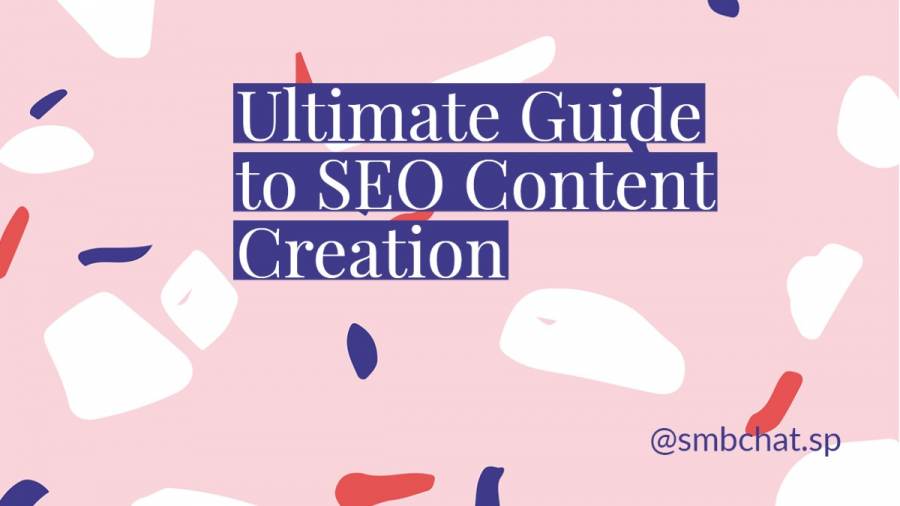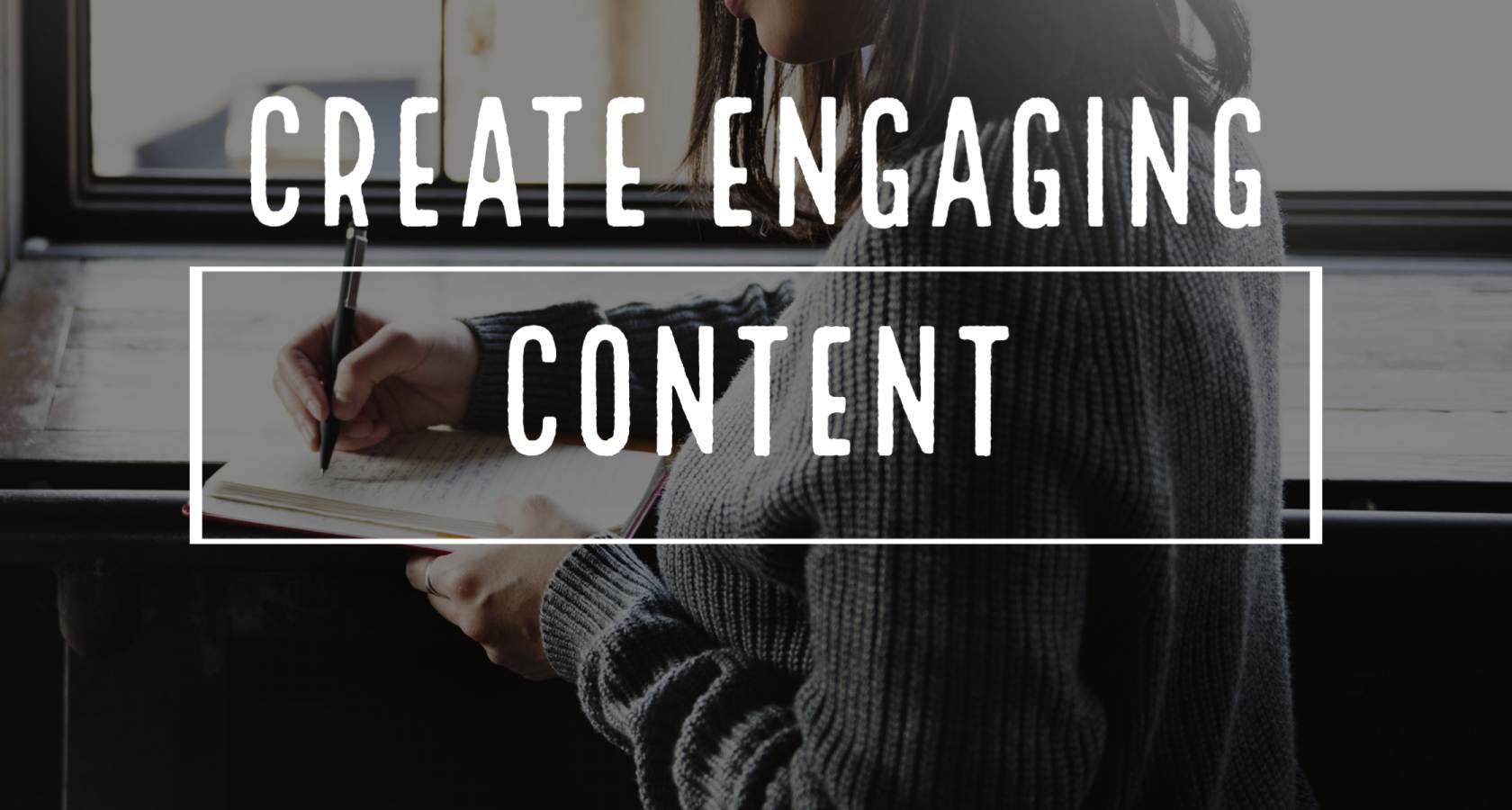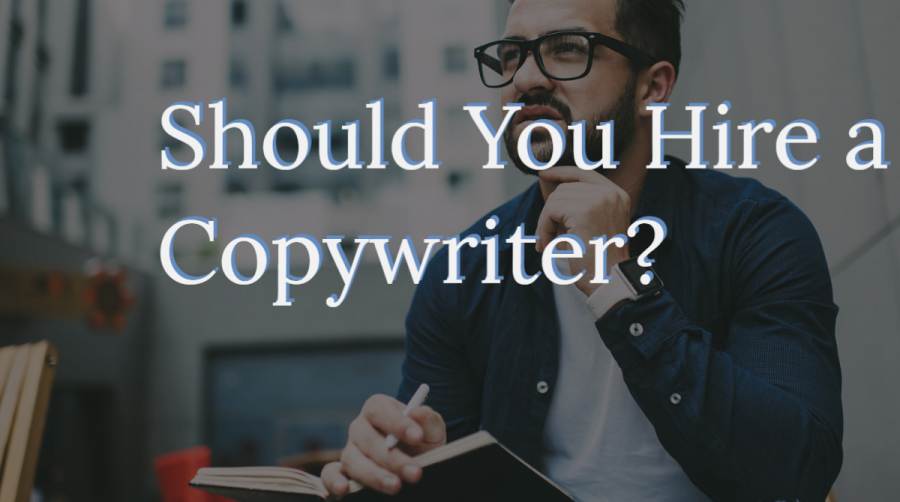How To Write a Marketing Ebook: 15 EBook Writing Tips, Tricks, and Best Practices
What comes to mind the moment you hear about ebook writing?
To some, it might be sleepless nights, words that go on forever, and caffeine-induced insomnia, all on top of desperation caused by the complexities of this type of content.
To others, ebook marketing means the best content for converting B2B leads, an excellent pick for on-page search engine optimization, and a magnet for high-quality sales and marketing qualified leads.
What end of this spectrum does your marketing team belong on?
This piece will tell you about e-books, what they are, how to perfect them, and everything in between.
Above that, it will show you why e books are more of an ally (and less of a foe) in the grand scheme of your marketing strategy.
Relevant Reading:
25 of the Best and Most Inspiring “About Us” Pages
How to Write an Inspiring About Us Page
9 Powerful eBook Writing Software Every Marketer Should Know
Yes, E-Books Are Actually a Thing
Let’s assume you’ve been tasked with writing this thing called an “ebook” for the first time and feel that you’ve been wasting time the past few minutes.
There are better ways to kill time, and curating 2,000 words of anything isn’t one of them.
You’re probably wondering:
Aren’t there better marketing alternatives?
What is an ebook?
What goes into one?
Why on earth am I tasked to write one?
What Is an E-Book ? (and What Does it Mean to My Business)
Short for an electronic book, an e-book is a non-edited reflowable marketing book that you transform into an electronic format and is readable on a panel screen device (such as the phone or laptop you’re holding).
In the most layman's terms possible (if such a thing exists), e-books are electronic versions of text.
The e-books you’ll read will be longer than blogs (sometimes many pages), more descriptive than case studies, with lots of statistics and data, and appeal to a different audience.
Also, unlike other forms of content, e-books are downloadable and printable.
However when it comes to e-books, what they are is less significant, it’s what they can achieve that you should be interested in.
An e-book:
- Attracts the highest quality leads from your target audience
- B2B leads that buy e-books are either customers or potential customers
- A reader who downloads or reads an e-book is likely to convert
- E-books allow you to go into detail, unlike other short-form content
And the fact that e-books are the most popular type of content marketing by readers is probably why you're writing one today.
Feel Like You’re Not Cut Out for EBook Writing? He're 4 Steps to Writing Your Best E-Book Yet
For most e-book writers, motivating days come far and few between. E-book writing will often feel boring, frustrating, and sometimes exhausting.
However, it doesn’t always have to be this way--at least not when you know where to get excellent ebook ghostwriters for your next project.
With an effective plan (like the one you’re about to read), not only can you start crafting engaging content; but you can do it in a shorter and less exhausting manner.
Here are a few steps to writing your most engaging ebook yet.
1. Come Up With an Engaging Title
The title of your ebook is everything. You’ve heard about the Pareto principle and how it applies to headlines countless times.
80% of people will read a title, of which only 20% will proceed to read your content.
The sixty or so characters that make up your title are crucial, often shaping the trajectory of your 10,000-word ebook for its entire existence.
And it shows in the numbers where titles have been proven to impact headlines by as much as 500%. Now that we have your attention let’s pick an exciting title for your ebook.
The anatomy of a compelling title is one that is:
- SEO Optimized
- Brief but comprehensive
- Appealing to your target audience
- Simple
If the above qualities are your destination, then effective title crafting is how you will get there. You can craft compelling titles for your ebook by:
- Using words that pull on the heartstrings and evoke the emotions of your reader
- Leverage abstract numbers (7, 13, 5) to add a touch of specificity to your headlines
- Creating a sense of urgency in the words you use in your title
- Addressing a reader’s pain point and alluding to a solution
2. Script a Comprehensive Outline.
Once you’re done with your title, proceed to script a comprehensive outline or skeleton of how you want your ebook to look like.
Scripting an outline is a productivity hack; it will help you fight the effects of writer’s block by breaking down your uninspiring mountain of work into small motivating pieces that your mind can tackle.
Many people will argue that without writing a title or an outline, they may have never started writing blogs and ebooks in the first place.
And it doesn’t stop there.
An outline allows you to quickly jot down ideas as you research them. This reduces the torment of combing previous research foraging for a statistic you read twenty minutes ago.
Writing an outline for your ebook is relatively simple for such an essential aspect of marketing. You can have one up and running with the following steps:
- Come up with a title for each chapter
- Come up with Subtopics (H1, H2, H3) for each chapter
- Fill in your outline with brief takes, links, and perspectives as you research
3. Write in One Go
Now that you have a title, outline, and pertinent research, there’s nothing stopping you from writing your ebook.
That said, it’s advisable to write your ebook in one go. I know what that sounds like to someone who’s not used to typing 5,000 words at a go, but it’s beneficial.
Writing your content in not more than two sessions allows you to:
- Maintain a consistent tone throughout the article
- Preserve a constant flow of ideas throughout your ebook
- Avoid writing in a distracted state
4. Devise a Compelling Summary of Your E-Book
Once you have argued your ideas in your ebook, you can go ahead to build a summary that covers everything you’ve written.
You may find yourself battling the temptation to create a summary at the start. You shouldn’t.
Often, when you write a summary or meta description before crafting the content, you end up making a summary of what you think you’ll write (not what you eventually write).
You can create a compelling summary for your ebook in the following steps:
- Read your ebook
- Request other colleagues to read your ebook
- Write out a list of problems your book solves (or questions it answers)
- Develop a set of hooks or teasers to pique the interest of your audience
- Start writing your description, synopsis, or summary
- Write the problems your book solves from the perspective of your customer
- Add a call to action
Making Your E-Book Visually Appealing to Your Target Audience
Getting this far in writing an ebook is an achievement. You have curated, thoroughly researched, and high-quality content that anybody would love to read.
Nevertheless, there is only one problem with your ebook in its current state. As Andreas Arnold would say, “It’s hard to look at.”
The visual appeal of your blog matters. With a visually appealing blog, you will be able to:
- Sustain your reader’s attention throughout your ebook
- Improve the “shareability” of your ebooks
- Improve your customer experience (CX)
- Help with search engine optimization (SEO)
That said, the visual appeal of your blog is not a lost cause. There isn’t a shortage of things you can do to make your ebook beautiful, attractive, and visually appealing. This includes:
1. Adding Relevant Graphics
Visual imagery makes your ebook infinitely better. Many people will click on your ebook because of your stellar off-page marketing.
However, once they realize they’re staring at a block of text with no visual cues insight, “No, Thank You.” That will be the farthest they’ll be willing to go as far as your ebook is concerned.
Imagery is essential for your target audience; that’s why both readers and search engine algorithms reward ebooks that have them.
2. Leveraging Infographics
Statistics get boring fast(they’re ugly too). If you’ve ever been at the receiving end of a boatload of stats, then you’re familiar with the effects of information overload and how quickly it can push someone away.
This is a common problem you’ll face with long-form content. Often, you’ll have to use words to stretch the attention span of your target audience for 10-15 minutes.
This is all while competing for their attention with Instagram, YouTube, and the other nine tabs waiting for them.
In this day and age, that is a feat on its own.
By now, you’ve probably realized that text alone can’t cut it; that’s why you need infographics. Infographics leverage a perfect blend of graphics, color tones, and numbers to help bring your statistics and content to life.
Once you get on the infographics bandwagon, you can expect:
- A more visually appealing blog
- More credibility for your ebook (since people actually read the statistics)
- A better reading experience for your reader
Fortunately, creating infographics is within your reach and isn’t as hard as people make it look. You can create infographics in the following steps:
- Study your target audience to learn their preferences
- Gather relevant data and statistics for your infographic
- Choose the best visualization option for your content (chart, graph, pie chart)
- Find a design template that suits your content
3. Short Sentences and Paragraphs
Long-form content doesn’t necessarily mean long and winding paragraphs that go on forever. On the contrary, the shorter your paragraphs, the better.
Brevity will help you:
- Break up your text
- Keep your reader’s attention
- Make your ebook visually appealing
It’s advisable to limit your paragraphs to two or three lines. Those six, seven, and eight-line paragraphs belong in the bible, not your ebook.
Above that, ensure that each paragraph carries an idea of its own and argues its point as thoroughly as humanly possible.
Cementing The Credibility of Your E-Book
Getting people to read your ebook is one thing; convincing them to believe and trust your information is another.
Skepticism on the internet has never been this high, and people won’t believe what you tell them by the mere fact that you say it.
By embracing credibility practices, you will be able to jump over this hurdle, zoom past your competition and earn the trust of your readers and search algorithms while at it.
Fortunately , there is a method to the madness. To increase the credibility of your ebook, you can consider:
1. Linking to Credible Sites and Sources
Linking to reliable sites and sources is credibility 101. Nonetheless, telling the difference between credible and non-credible sites can be daunting. Before you link to a source:
- Check if the source has SSL certification (or the padlock icon on its URL)
- Pick articles that rank well on search engine results pages (SERP)
- Pick the original source of statistics (not the recreations)
- Link to recent articles and links
The third point is essential. By the time research or statistics get halfway through the internet, they have been reworded to the point that they look nothing like the original.
As you go ahead writing statistics and data, always double-check to ensure that you’re linking the original sites.
2. Using and Referencing Pertinent Research
The quality of your ebook can only be as good as the hours of research and documentation you put into it.
You might be hearing this for the first time, but experienced audiences (especially C-Executives) can smell the lack of research, half-truths, strawmen, and lousy b.s from a mile.
To ensure that your ebook is research-based and free from your biases and intuition, you can consider:
- Finding your research sources before writing your ebook
- Citing all your sources to avoid plagiarism and implausibility
3. Getting Quotes and Takes from Experts
Another road less traveled is going farther and putting expert quotes, takes, and perspectives into your ebooks.
Quoting from a subject matter expert in your field immediately does a few things to your ebook, including:
- It increases the authoritativeness of your content and website
- Brings different voices to your blog
- Increases trust by the association of your content with respected experts
- Increases the credibility of your blog
That established, finding expert quotes for your ebook isn’t a walk in the park either. To make this easier, you can:
- Send your target expert a media report
- Exchange backlinks on your site for expert quotes and takes
- Use sites such as HARO( Help A Reporter Out) to find content
- Come clear whenever you want to make an edit or change a quote
How to Market an EBook
In an ideal world, your target audience would effortlessly gravitate to your content like fireflies to a flickering light source.
Unfortunately, this is never the case.
Without proper marketing, you may be the first and last person ever to read your ebook, a possibility that flushes all your hard work down the drain.
However, marketing your ebooks doesn’t have to be complicated. You can make it all easier by leveraging:
1. Search Engine Optimization (SEO)
For some weird reason, content curators have come to believe that long-form content such as blogs, ebooks, and whitepapers are exempt from the rules of SEO.
Nothing could be farther from the truth.
In fact, you could argue that long-form content needs more optimization than its short-form alternatives. The ebooks you write should have SEO tactics if you want to rank on SERP and get readers to read your content.
That’s not all. Even if your primary means of delivery will be through email marketing, SEO is still essential. You may not be familiar with this, but an SEO-unfriendly ebook will affect the rankings of your website and other content in general.
For these reasons, consider having the following SEO strategies for your ebooks:
- Backlink to your blogs and content
- Link to other authoritative sources
- Back up your content with pertinent research
- Use keywords in your title tag and meta description
- Add relevant imagery to your ebook
2. Design an Appealing Landing Page
Your ebook is only as good as its landing page. Apart from ushering your target audience to your content, it will serve as the summary of your content.
Your first impression with your target audience should be on point- you can’t afford to mess this up, and it starts with your landing page.
For your landing page to be successful, it should:
- Pique the curiosity of your reader
- Provide a brief summary of your content
- Prompt them to read your ebook
Nonetheless, achieving this is easier said than done, and that’s where an effective landing page comes into play. You can consider:
- Using a sleek modern, and minimalistic design
- Leveraging an engaging title
- Briefly explaining the benefits of
- Prompt action directly with a strong call-to-action
3. Email Marketing
Do you have an already existing email list or email subscribers?
You might not realize it, but if you do, things are probably a lot easier for your ebook marketing strategy. That said, not having one isn’t the end of the world. It’s never too late to start.
Making your ebook part of your email campaign is probably the best tactic on this side of ebook marketing.
And if you have a B2B business, it gets even better. Leveraging an already existing email B2B pipeline will help your ebook get readers and convert your leads into customers.
4. Requesting Your Readers to Share
Something as simple as a large and conspicuous “share button” will do wonders for your ebook marketing. The more referrals your content gets, the higher your content ranks, bringing in more readers who eventually refer your content to others.
“Asking nicely” for those who love and appreciate your content to “share the joy” leads to a revolving door of readers, credibility, and higher rankings.
5. Up Your Social Media Marketing Game
Social media marketing is another often overlooked aspect of email marketing. There are a million reasons why promoting your ebook on social media is advisable.
For starters, social media is:
- Cheap
- Scalable
- Has a proven ROI
With the might and power of social media on your side, ebook marketing has never been this easier. Through channels like Facebook and Twitter, you can expose your ebook content to your followers, who can share it with their followers effortlessly with the tap of a button.
That’s a Lot of Work, But It’s Nothing Zoey Can’t Handle
The first step to crafting exceptional works of art is realizing that anybody can write a great e-book.
The second is realizing that you don’t have to.
Think about it, e-book writing is only one aspect of your life.
You have places to go, better projects to complete, people to meet, things to learn and dates on Friday evenings, and dinner with family.
One person can only do so much.
A proposition; instead of spending hours writing e-books, let Zoey do the heavy lifting on your behalf. This way, you get to focus on everything else. Contact us today to learn more about our ebook writing services.
Photo by Thought Catalog on Unsplash. Thanks, Thought Catalog :)

















